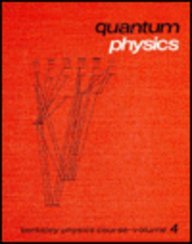Quantum Physics (Berkeley Physics Course, Volume 4) ebook download
Par elsberry jose le dimanche, décembre 18 2016, 13:27 - Lien permanent
Quantum Physics (Berkeley Physics Course, Volume 4). Eyvind H. Wichmann

Quantum.Physics.Berkeley.Physics.Course.Volume.4..pdf
ISBN: 0070048614,9780070048614 | 423 pages | 11 Mb

Quantum Physics (Berkeley Physics Course, Volume 4) Eyvind H. Wichmann
Publisher: Mcgraw-Hill College
It wasn't until the middle of the Twenty-First Century that their various works in relativity, time, and string theory came together in a Quantum Physics Lab at UC/Berkeley when Doctoral Candidates Edvard Knapp and Marla Xi discovered the convergence of the three bodies of work in a set Ironically, it took longer for the radioed news of the breakthrough to reach Earth, less than 4 billion miles away, than it took for the probe to travel the eight light-years to Promixa Centauri and back. Berkeley Physics Course vol 3 [1st Ed] – waves.part3.rar. Berkeley Physics Course vol 3 [1st Ed] – waves.part2.rar. And the big one: why do the two pillars of 20th century physics, quantum mechanics and Albert Einstein's general theory of relativity, not agree with each other? By probing This they did by detecting the quantum-mechanical equivalent of beats, the cyclical peak in volume produced when two sound waves of different frequency interfere with one another. Feb 4, 2010 2 comments · Algal proteins harvest light with efficiency · Quantum evolution Algal proteins harvest light with efficiency. Berkeley Physics Course vol 3 [1st Ed] – waves.part4.rar. Quantum Physics (Berkeley Physics Course, Volume 4) Download eBook. Physicists in Canada and Australia have shown that nature exploits quantum mechanics to make photosynthesis more efficient. 10) “This is the first clock based on a single particle,” says Holger Müller, a physicist at the University of California, Berkeley. �Its ticking rate is determined only by the In particular, Müller and his colleagues wanted to determine how frequently the wave form of a single atom oscillates, a quantity that in quantum mechanics is inherently linked to the atom's mass. Print edition: February 9, 2013; Vol.183 #3 (p.